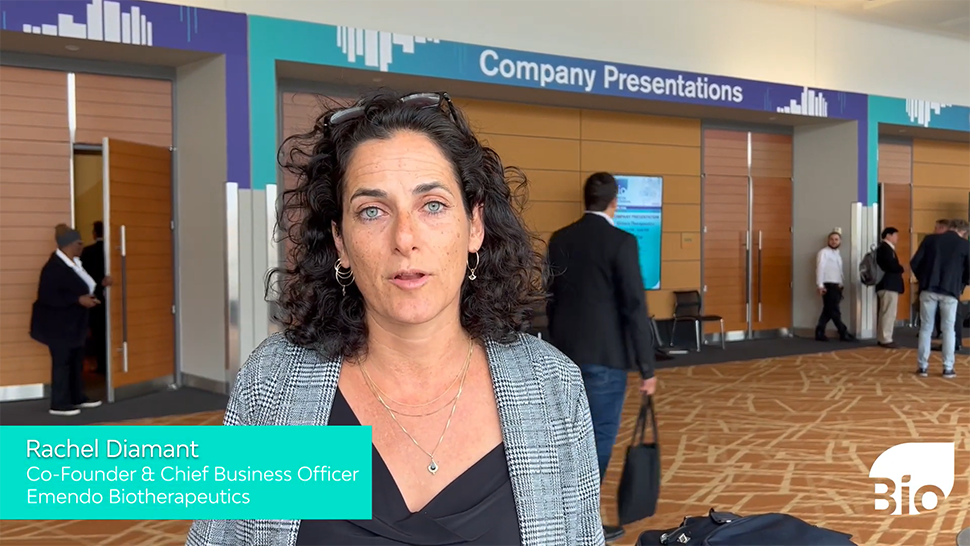Company presentations at the BIO International Convention put innovators on stage before a small but important audience, helping them engage in the networking and partnering that are a hallmark of the event.
Partnering drives the biotech industry, and the ample partnering opportunities are a key reason for attending the Biotechnology Innovation Organization (BIO) International Convention in San Diego on June 3-6 this year. At last year’s BIO International Convention in Boston, more than 20,000 attendees from academia, biotech, and other industries held more than 57,000 meetings.
One of the best ways to increase visibility and meetings with potential partners is to give a company presentation at BIO 2024, speaking on a stage about your company before an interested audience, according to Emily Longvall, Manager of Industry Research and Education at BIO.
“Historically, presenting companies scheduled twice as many partnering meetings as companies that did not present,” says Longvall, adding that this is why so many companies present at BIO 2024. “In both 2022 and 2023, we had record numbers of in-person company presentations. Last year there was a total of 265, which meant we were sold out and had a wait list.”
Presentations also provide another way to reach potential partners, according to Mackensie Vernetti, BIO’s Vice President of Partnering.
“Company presentations and partnering meetings complement one another at BIO’s events,” Vernetti says. “The presentation provides the opportunity to communicate a company’s work and innovation to a room of peers and potential investors and partners, and partnering meetings allow for more intimate conversations among interested parties.”
Reasons for partnering and presenting
Biotech firms require partnerships at all stages of development. The industry thrives on a formula of small innovative firms partnering with larger firms that can bring innovations through approval and to market. But along with M&A deals, firms are also seeking venture deals, institutional deals, license deals, vendor agreements, and other kinds of collaboration.
Partnering opportunities at the BIO International Convention are managed and enhanced by the BIO One-on-One Partnering™ System, which allows companies to share their profile and the exact kind of partnerships they need before the event takes place. Companies can then schedule meetings using the system, which will find free times for both parties and reserve a space for them to meet in San Diego. Those who are presenting at BIO 2024 will have this noted in their profile, so others know to look for their presentation.
Anyone interested in partnering therefore has good reasons for presenting, as it offers a way to call attention to whatever it is you’re offering, Longvall says.
“Common reasons for presenting include looking for investors, looking for partners seeking to license a product, or looking for partners as scientific collaborators,” she explains.
There are also those who are not seeking partners but still have good reason to present.
“It’s not uncommon for companies to present to share news. For instance, they just got through their phase two clinical trial, and they want to present the results,” says Longvall. “Larger companies and some of our sponsor companies present to introduce a new program that they have going or a new product that they’re working on.”
Reasons to watch presentations
The reasons for people to watch presentations are also varied.
“The cross section of people that come to BIO 2024—we see them in company presentation theaters,” Longvall says. “Obviously some of those people are there looking to make partnerships, but we also see a lot of people who are just interested in what the company is doing.”
“You’ll also find that people attend presentations in lieu of scheduling a partnering meeting in some cases,” Vernetti says. “They may have curiosity about a company but were unsure a private partnering meeting was necessary at this stage, so they’ll attend the company’s presentation. From there, they speak with the presenter immediately following the presentation and can even still send the company a meeting request in the partnering system.”
How it works
In San Diego, there will be four different theaters set up for the presentations, situated conveniently between the exhibition hall, with company booths, and the area set aside for one-to-one meetings.
Presenters must apply to book a space. The purpose of the application is to make sure that whoever is presenting is ready for partnering or to reach an audience, and that the BIO International Convention is the right place for the audience they seek, Longvall says. Law firms and consulting firms are not accepted for presentations, as the slots are reserved for biotech firms, she adds.
Presenters have 13 minutes for a presentation, with a stage, a podium, and screen, in a space designed to hold 30-40 people. Presenters also get some advice on best practices: for instance, keep slides basic and generally avoid overly technical presentations—more detail can always come later.
How well it works
Samantha Dale Strasser, Cofounder and CSO at Pepper BIO shares her own experience of giving a presentation.
“Pepper is a startup company, and presenting at BIO was a great opportunity for us to showcase what we’re doing,” says Strasser. “I’ve always really enjoyed presenting at BIO and found a lot of traction, so I’d highly recommend other companies, especially those that are new to the space to present at BIO. You have your name on the program. Folks can be aware of what you’re building, can come talk to you.”
Feedback from presenters is positive, according to Longvall, even if the results are not always immediate.
“These meetings are one touchpoint in a many-touchpoint conversation,” so they sometimes hear several years later about a successful deal that started with a conversation at the BIO International Convention, Longvall says. “It’s great to hear about those conversations.”




